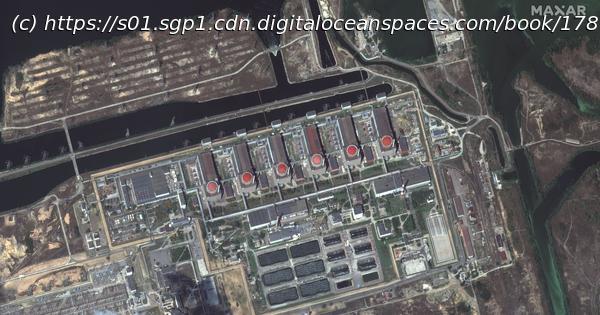A deliberate attack against Europe’s biggest nuclear power plant would break international norms.
Shelling has intensified at the Russian-controlled Zaporizhzhia nuclear power plant, raising international safety concerns. Ukrainian staff continue to operate the massive plant under strict control and stressful conditions.
Both Russia and Ukraine are blaming one another for the continued attacks, and damage. Disinformation and fake news have played a major role in this conflict, and so the exact nature of the situation is unclear.
It seems unlikely that either side would want to seriously damage Europe’s biggest nuclear plant, in the near-frontline city of Enerhodar, and cause a release of radiation. Ukrainian plant workers claim that Russia is deliberately targeting non-critical equipment. A deliberate attack against a nuclear facility would break international norms, and concerns over the potentially dangerous consequences are well justified.
This plant is not like Chernobyl, the site of the world’s biggest nuclear disaster. Chernobyl was an older reactor type, with several questionable design choices. Like Zaporizhzhia, it was cooled by water, but it also contained large quantities of graphite to perform a function known as neutron moderation, which is necessary for the reactor to operate. When the Chernobyl reactor overheated, the water boiled away and became less effective at cooling. However, the graphite continued to moderate the neutrons, allowing the reactor power and thus temperature to build uncontrollably. The shutdown system at Chernobyl was also poorly designed and contributed to the accident.
At Zaporizhzhia, as with the majority of reactors globally, if the reactor overheats, both cooling and moderation are reduced, and so the reactor power also reduces. Nuclear engineers see this as fundamental to safe reactor design.
But a breach of a fuelled and operating reactor could still be disastrous if attacks damage nuclear materials or safety-critical equipment. This could release large quantities of hazardous nuclear material into the air, potentially contaminating vast areas of land and water supplies.
The reactors are surrounded by high strength containment buildings. These are designed to both contain explosions from within, and to withstand a certain amount of force from outside.
Домой
United States
USA — Science Zaporizhzhia may not be Chernobyl, but shelling it is like inviting disaster






